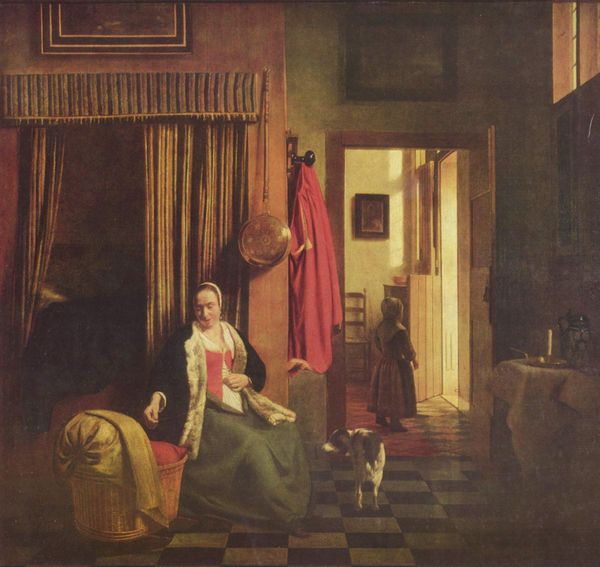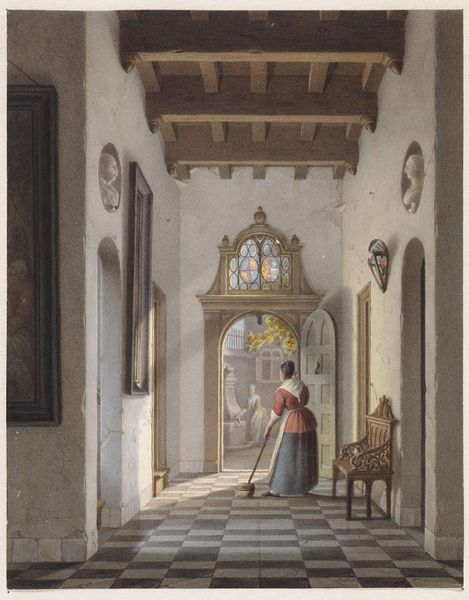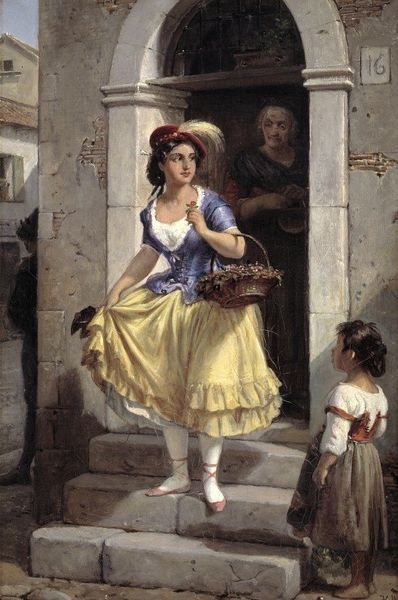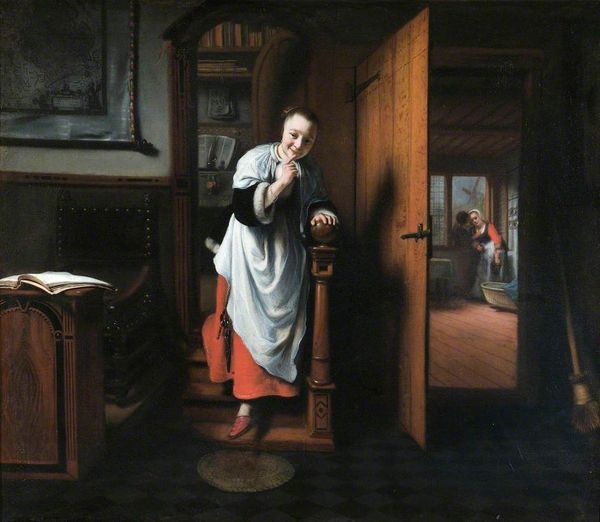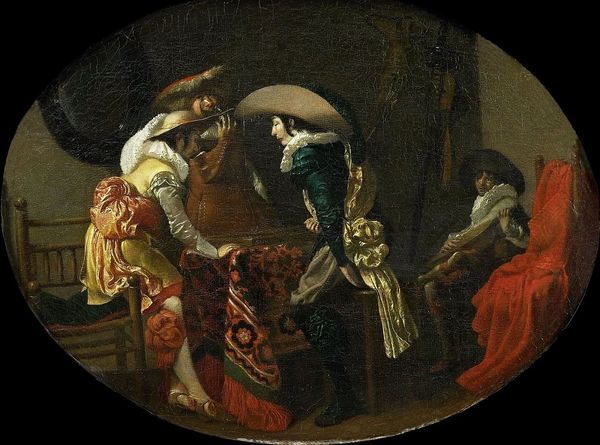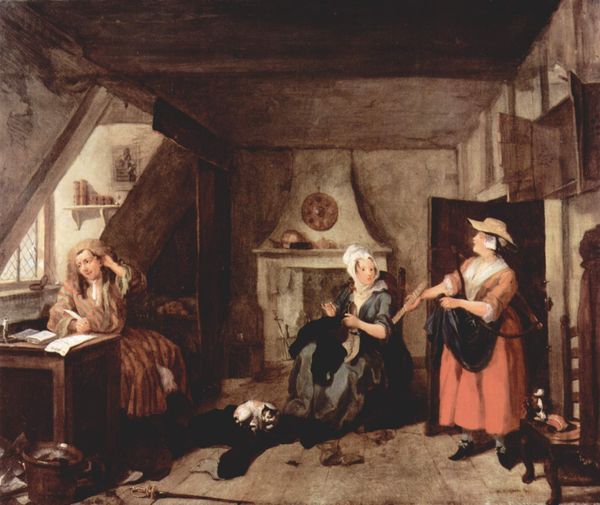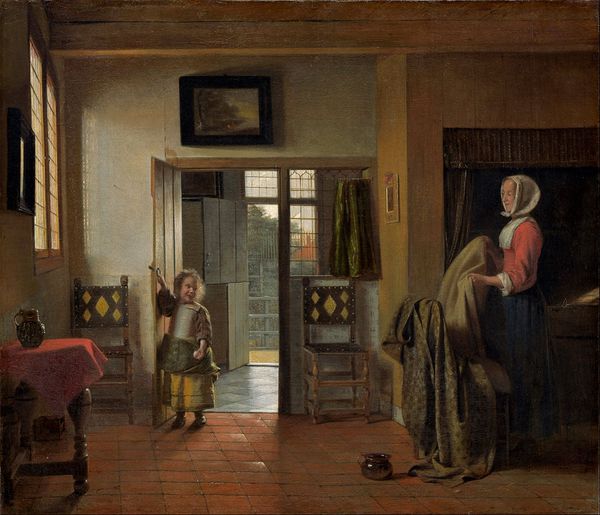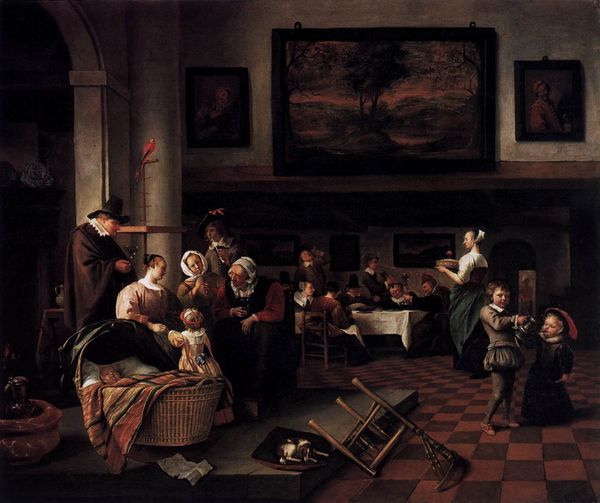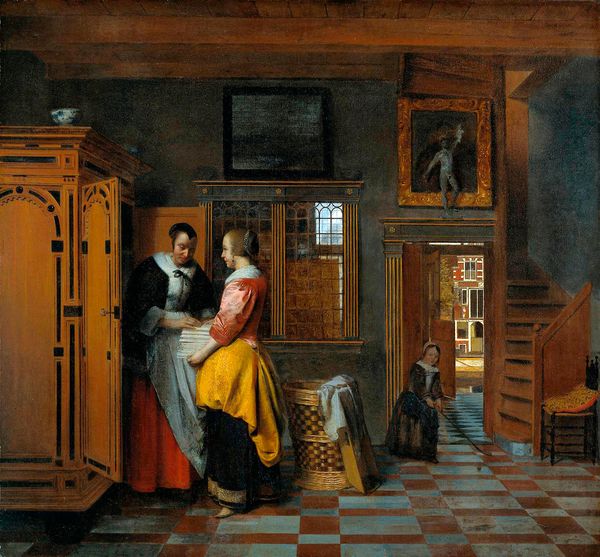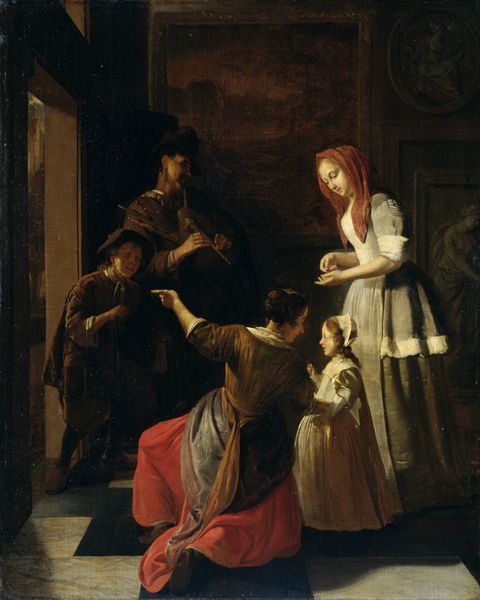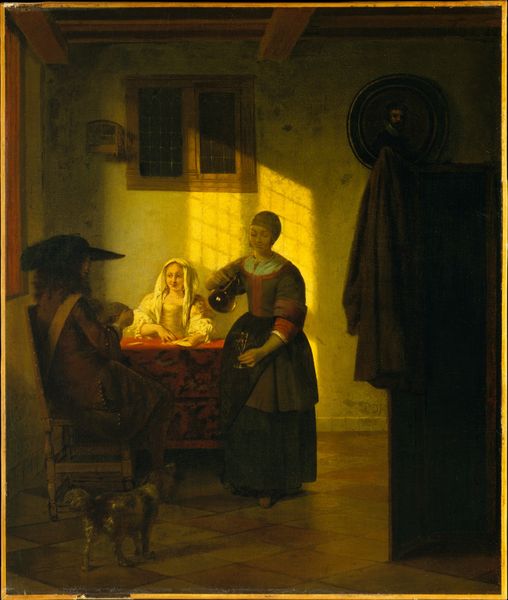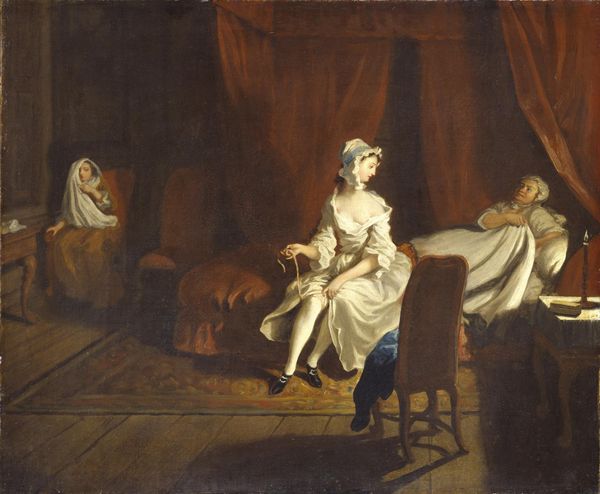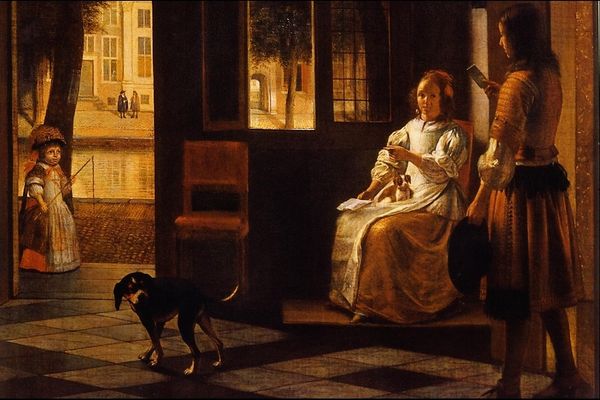
painting, oil-paint
#
narrative-art
#
dutch-golden-age
#
painting
#
oil-paint
#
cityscape
#
genre-painting
#
realism
Dimensions: 92.5 x 122 cm
Copyright: Public domain
Curator: We're looking at "The Eavesdropper," a genre painting crafted in 1657 by Nicolaes Maes. The Dordrecht Museum holds this scene, brought to life with oil on canvas. What strikes you first about this painting? Editor: The architecture overwhelms! It feels like the stage of some elaborate domestic drama. Dark archways frame these glimpses into separate little worlds, a hidden message conveyed beneath it all. Curator: It's an interesting choice for Maes. The painting’s domesticity invites viewers to contemplate 17th-century Dutch social mores regarding women and private spaces, right? There is clearly hierarchy established in the location and the different activities going on within each vignette. Editor: Precisely. It isn't merely eavesdropping that Maes captures but systems of class, privilege, and, undeniably, gender, all within the architecture of daily life. I keep considering the woman looking to her right at the embracing couple! I see multiple stories within this artwork and want to be on the outside peering in for only a moment, yet that would certainly create another piece entirely. Curator: Note the strategic composition: the way Maes employs a strong play of light and shadow to draw our eyes to the central figure while also directing us towards the activities within those spaces beyond. Consider how domestic spaces, often managed by women, become crucial areas of social commentary and—potentially—resistance. Editor: I appreciate your pointing out that her quiet act could be considered "resistance.” After all, whose narrative dictates what information or actions remain private in the first place? Maes may have tapped into this notion of quiet revolution taking shape through everyday resistance. I feel that he gives a quiet, unassuming hero. Curator: His realism—hallmark of the Dutch Golden Age—mirrors these social dynamics of 17th century life. So Maes wasn't simply a chronicler; he was dissecting social norms through imagery. Editor: Right. The choice to situate his paintings within such detailed architecture tells viewers something too. Through the window's reflection or an action captured across the divide—we may be left wondering "what did I see?". This artwork’s ability to ignite questions and conversations regarding hierarchies in everyday places make it uniquely captivating. Curator: So this is Maes’ success, reflecting a social consciousness woven into the everyday tapestry of 17th century Holland. Editor: It certainly succeeds, inviting us not just to view art but also engage critically about historical constructions surrounding privacy, social norms, gender and—the art of the everday.
Comments
No comments
Be the first to comment and join the conversation on the ultimate creative platform.
